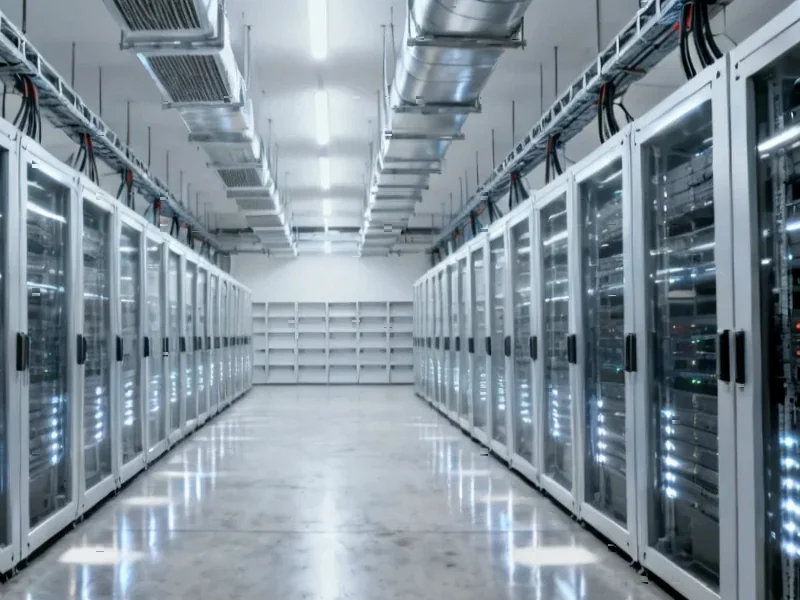According to Neowin, Microsoft has signed a $9.7 billion deal with data-center operator IREN to secure access to NVIDIA’s advanced chips, addressing the computing capacity crunch that has limited Microsoft’s ability to fully capitalize on the AI boom. The arrangement involves Dell supplying IREN with NVIDIA’s GB200 chips and other equipment worth $5.8 billion for Microsoft’s use, with deployment scheduled for next year at IREN’s 750-megawatt Childress, Texas campus. Following the announcement, Dell shares rose 5% while IREN shares surged more than 20% in premarket trading, valuing the company at $16.52 billion. Microsoft CFO Amy Hood indicated the company’s AI capacity constraints could persist until mid-2025, making this deal crucial for meeting demand for Copilot offerings. The arrangement allows Microsoft to expand computing capacity without building new data centers or securing additional power.
The New Economics of AI Infrastructure
This deal represents a fundamental shift in how technology giants approach AI infrastructure. Rather than the traditional model of owning and operating everything, Microsoft is essentially renting computing capacity through strategic partnerships. The $9.7 billion figure, while substantial, actually represents significant savings compared to the alternative of building new data centers from scratch. When you factor in land acquisition, construction costs, power infrastructure, and the rapid depreciation of AI chips, this partnership model makes compelling financial sense. The arrangement also transfers significant risk to IREN, which must deliver on specific timelines or face contract termination.
The Coming Liquid Cooling Revolution
The mention of new liquid-cooled data centers designed for 200 megawatts of critical IT capacity signals a major industry transformation. Traditional air-cooled data centers simply cannot handle the thermal density of modern AI chips. As processors become more powerful, their power consumption and heat generation increase exponentially. Liquid cooling isn’t just an efficiency improvement—it’s becoming a necessity for high-performance AI workloads. This deal will likely accelerate adoption across the industry, creating new opportunities for cooling technology providers and forcing data center operators to rethink their entire infrastructure approach. The visual representation of modern data centers will need to evolve dramatically as liquid cooling becomes standard.
The AI Capacity Arms Race Intensifies
Microsoft’s move reveals just how serious the AI computing shortage has become. When a company with Microsoft’s resources cannot build capacity fast enough to meet demand, it indicates structural constraints that will shape the industry for years. We’re witnessing the beginning of an AI infrastructure arms race where computing capacity becomes the ultimate competitive advantage. Smaller AI companies without similar resources will face increasing challenges accessing the computational power needed to train cutting-edge models. This could lead to further industry consolidation as companies without guaranteed computing access struggle to compete.
The Renewable Energy Imperative
IREN’s facilities being powered entirely by renewable energy isn’t just an environmental consideration—it’s becoming a business necessity. The massive power requirements of AI data centers (IREN’s North American capacity totals 2,910 megawatts) make traditional energy sources both economically and logistically challenging. Regions without reliable access to renewable energy may find themselves at a significant disadvantage in attracting AI infrastructure investments. This deal underscores how sustainability and AI advancement are becoming inextricably linked, with clean energy access emerging as a critical factor in determining which regions become AI hubs.
Strategic Implications for the AI Ecosystem
Looking ahead, this type of partnership model will likely become standard for major AI players. The capital requirements and technical complexity of building AI-optimized infrastructure are simply too great for even the largest companies to handle alone. We should expect to see more specialized infrastructure providers emerging to serve this market, creating a new ecosystem around AI computing. The companies that control access to computing capacity—whether through ownership or strategic partnerships—will wield significant influence over the direction of AI development. This deal represents not just a tactical solution to Microsoft’s immediate capacity needs, but a strategic blueprint for how the entire industry will likely evolve.




